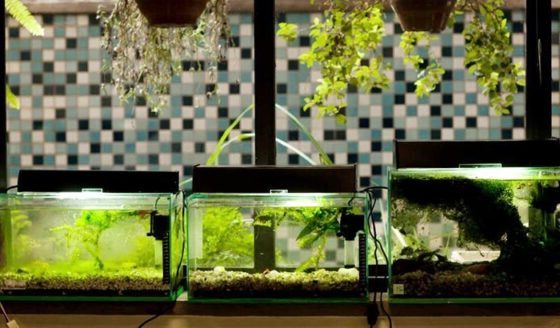If you’re an aquarium enthusiast, you know that taking proper care of your aquatic plants is essential. One important step in ensuring the health of your aquarium is quarantining new plants before adding them to your tank. So, how long do you need to quarantine aquarium plants?
The answer may vary depending on various factors, but in this article, we’ll guide you through the process and provide you with some helpful tips to keep your aquatic environment thriving. Let’s dive in!
How Long to Quarantine Aquarium Plants?
Aquarium plants are a beautiful addition to any fish tank, providing not only aesthetic appeal but also numerous benefits to the overall health and well-being of the aquatic environment.
However, just like with any living organism introduced into a closed system, there is always a risk of introducing unwanted pests, diseases, or algae that can harm your fish and other aquatic inhabitants. This is where quarantine comes in as a crucial step in ensuring the health and stability of your aquarium.
Quarantining aquarium plants involves isolating them from your main tank for a specific period to monitor and address any potential issues before introducing them to the established ecosystem.
In this article, we will explore the importance of quarantine, the ideal duration to quarantine aquarium plants, and the steps to effectively carry out the process. Let’s dive right in!
The importance of quarantine for aquarium plants
Quarantine is a preventive measure that helps safeguard your aquarium from potential threats. When it comes to aquarium plants, quarantine serves several essential purposes:
- Disease prevention:
Quarantining plants reduces the risk of introducing diseases, parasites, or pests into your established tank. Plants obtained from various sources may carry hidden pathogens or hitchhikers that can harm your fish or disrupt the ecosystem.
- Algae control:
New plants can sometimes introduce unwanted algae species into your aquarium, leading to aesthetic issues and potential imbalances in the tank’s ecosystem. Quarantining plants provides an opportunity to identify and treat any algae problems before they spread.
- Stress reduction:
Transitioning from one environment to another can be stressful for aquarium plants. By isolating them in a separate tank, you allow them time to acclimate to new conditions, ensuring their health and overall survival.
Read More: About What Kills Clover but Not Grass: A Definitive Guide
The ideal duration for quarantining aquarium plants
Determining the optimal duration for quarantine can be a bit challenging, as it depends on various factors such as your personal preferences, the health status of the plants, and the level of risk you’re willing to accept.
However, a general guideline to follow is a quarantine period of 2-4 weeks. During this time, you can closely observe the plants and address any issues that may arise.
It’s important to remember that some diseases and pests have incubation periods longer than a few weeks. Therefore, it’s wise to conduct thorough research and consult experienced aquarists or professionals to ensure you’re adequately addressing potential risks.
Additionally, it’s crucial to maintain strict hygiene practices and carefully monitor the plants during and after their quarantine period.
Steps to effectively quarantine aquarium plants
To quarantine aquarium plants successfully, follow these essential steps:
- Set up a separate quarantine tank:
Prepare a dedicated tank for the quarantine process. It should be equipped with filtration, lighting, and other essential equipment to ensure a suitable environment for the plants.
- Inspect and clean:
Before introducing any plants, carefully inspect them for signs of pests, diseases, or damaged portions. If necessary, trim off any affected areas. Additionally, rinse the plants in tepid water to remove any debris or hitchhikers.
- Isolate the plants:
Place the plants in the quarantine tank, ensuring they are well-separated from each other. This prevents the spread of potential issues among the plants. Consider using individual containers or pots for further isolation.
- Observe and monitor:
Throughout the quarantine period, closely monitor the plants for any signs of pests, diseases, or algae growth. Regularly check for changes in appearance, behavior, or any unusual symptoms. Conduct frequent water parameter tests to ensure optimal conditions.
- Treat if necessary:
If you notice any issues during the quarantine period, take appropriate measures to address them. This may involve using suitable treatments or seeking advice from professionals to eradicate pests or diseases.
- Extended observation:
Even after the initial quarantine period, consider extending the observation period for an additional week or two. This helps ensure the plants remain healthy and free from any hidden problems.
By following these steps and maintaining a diligent approach, you greatly minimize the risk of introducing potential threats to your main aquarium. Remember, prevention is always better than cure when it comes to the well-being of your aquatic ecosystem.
Quarantining aquarium plants is a vital practice for any conscientious aquarist. It helps maintain the health and stability of your tank by minimizing the risk of introducing diseases, pests, or algae. The ideal duration of quarantine ranges between 2-4 weeks, but thorough research and expert advice are necessary for specific situations.
By following the proper steps and taking extra precautions, you can ensure that the plants you introduce to your aquarium contribute positively to its overall beauty and balance.
Read More: About What Herbs Can Be Planted Together: A Planting Guide
Frequently Asked Questions (FAQs)
The recommended quarantine period for aquarium plants is typically two to four weeks.
Quarantining aquarium plants is crucial to prevent the introduction of pests, diseases, or algae into your main tank. It helps ensure the health and well-being of your aquatic ecosystem.
Quarantining aquarium plants offers several benefits, including:
1. Preventing the spread of diseases and parasites to other tank inhabitants
2. Allowing for observation and treatment of any potential issues
3. Preventing the introduction of unwanted algae
To quarantine aquarium plants, follow these steps:
Remove the plants from their packaging and inspect them for any evident signs of pests or diseases.
Place the plants in a separate tank or container with clean water.
Observe the plants closely over the quarantine period for any signs of pests, diseases, or unusual growth.
If any issues arise, take appropriate measures to treat or address them.
Yes, using a separate tank for quarantine is highly recommended. It helps ensure that any potential issues with the plants remain isolated from your main aquarium.
No special equipment is required for plant quarantine. However, having a basic setup with a separate tank, clean water, and appropriate lighting can facilitate the process.
Shortening the quarantine period is not advisable, as it may increase the risk of introducing pests or diseases into your main tank. It is best to follow the recommended timeframe of two to four weeks.
If you notice pests or diseases during the quarantine period, it is important to take prompt action. Remove the affected plants from the quarantine tank, and treat them accordingly. Consult with a knowledgeable aquarium professional or conduct research to identify the most suitable treatment options.
Skipping the quarantine process is not recommended, as it significantly increases the risk of introducing potential problems into your aquarium. It is always better to take preventive measures to maintain the health and balance of your aquatic environment.
Final Thoughts
Quarantining aquarium plants is a crucial step to ensure the health and safety of your aquatic ecosystem. The duration of the quarantine period varies depending on several factors. Generally, it is recommended to keep the plants separate for a minimum of two weeks.
This timeframe allows for any potential diseases, parasites, or pests to manifest and be identified before introducing the plants to the main aquarium. Regular observation and monitoring are essential during this period. By following a thorough quarantine process, you can safeguard your aquarium from potential harm and promote the well-being of your aquatic inhabitants.
Auto Amazon Links: No products found.
Perfect Plants Christmas Tree Saver 8oz. | Easy Use Xmas Tree Preserver Food | Have Healthy Green Christmas Trees All Holiday Season
$9.97 (as of December 3, 2025 00:36 GMT +00:00 - More info- Product prices and availability are accurate as of the date/time indicated and are subject to change. Any price and availability information displayed on [relevant Amazon Site(s), as applicable] at the time of purchase will apply to the purchase of this product.
Kaiedos Christmas Tree Watering Funnel - 39 Inch Funnel, Reusable Design, Makes Watering Your Live Tree a Snap!
$14.99 (as of December 3, 2025 00:36 GMT +00:00 - More info- Product prices and availability are accurate as of the date/time indicated and are subject to change. Any price and availability information displayed on [relevant Amazon Site(s), as applicable] at the time of purchase will apply to the purchase of this product.
Christmas Tree Watering Funnel, Real Christmas Tree Water Long Funnel About 40 Inch, Trees Watering System for Water Indoor Outdoor
$15.99 (as of December 3, 2025 00:36 GMT +00:00 - More info- Product prices and availability are accurate as of the date/time indicated and are subject to change. Any price and availability information displayed on [relevant Amazon Site(s), as applicable] at the time of purchase will apply to the purchase of this product.
IPOOLTENG Christmas Tree Watering Funnel 3 Tube 1 Funnels 40 Inch - 3 Section Plastic Christmas Tree Funnel Waterer, Long Funnels for Watering Trees, Best Gifts for Your Parents to Water Tree
$15.53 (as of December 3, 2025 00:36 GMT +00:00 - More info- Product prices and availability are accurate as of the date/time indicated and are subject to change. Any price and availability information displayed on [relevant Amazon Site(s), as applicable] at the time of purchase will apply to the purchase of this product.
1 Pack Christmas Tree Watering Funnel System, 44 Inch Christmas Tree Watering Stick with Adjustable 3-Section Design, Reusable & Spill-Free, Xmas Plant Waterer Tool for Indoor and Outdoor
$16.99 (as of December 3, 2025 00:36 GMT +00:00 - More info- Product prices and availability are accurate as of the date/time indicated and are subject to change. Any price and availability information displayed on [relevant Amazon Site(s), as applicable] at the time of purchase will apply to the purchase of this product.
Cuisinart 6.5" Cast Iron Smashed Burger Press, Round Flat Edge Grill Press for Crispy Smash Burgers, Burger Tool for Grill and Griddle Accessories, for BBQs and Tailgates
$24.99 (as of December 3, 2025 16:48 GMT +00:00 - More info- Product prices and availability are accurate as of the date/time indicated and are subject to change. Any price and availability information displayed on [relevant Amazon Site(s), as applicable] at the time of purchase will apply to the purchase of this product.
Muddy Mat® Shown on TV Super Absorbent Microfiber Dog Door Mat for Muddy Paws, Non-Slip Washable Pet Rug, Quick Dry Chenille Entryway Carpet, Machine Washable Indoor Outdoor mat, Grey 30"x19"
$19.95 (as of December 3, 2025 16:48 GMT +00:00 - More info- Product prices and availability are accurate as of the date/time indicated and are subject to change. Any price and availability information displayed on [relevant Amazon Site(s), as applicable] at the time of purchase will apply to the purchase of this product.
Snow Joe Premium Enviro Blend Ice Melt, Green-Coated Deicer Crystals, 50 lb - Safer Melter for Vegetation, Concrete & Metals w/ Anti-Corrosion Calcium Magnesium Acetate
$32.97 (as of December 3, 2025 16:48 GMT +00:00 - More info- Product prices and availability are accurate as of the date/time indicated and are subject to change. Any price and availability information displayed on [relevant Amazon Site(s), as applicable] at the time of purchase will apply to the purchase of this product.
OLANLY Dog Door Mat for Muddy Paws 30x20, Absorbs Moisture and Dirt, Absorbent Non-Slip Washable Doormat, Quick Dry Chenille Mud Mat for Dogs, Entry Indoor Entryway Carpet for Inside Floor, Grey
$9.99 (as of December 3, 2025 16:48 GMT +00:00 - More info- Product prices and availability are accurate as of the date/time indicated and are subject to change. Any price and availability information displayed on [relevant Amazon Site(s), as applicable] at the time of purchase will apply to the purchase of this product.
Zevo Flying Insect Trap Official Refill Cartridges - Fits Both Zevo Trap & MAX Indoor Fly Trap - Authentic Trap+Lock Technology to Catch Gnats, House & Fruit Flys (4 Official Refill Cartridges)
$14.97 (as of December 3, 2025 16:48 GMT +00:00 - More info- Product prices and availability are accurate as of the date/time indicated and are subject to change. Any price and availability information displayed on [relevant Amazon Site(s), as applicable] at the time of purchase will apply to the purchase of this product.











